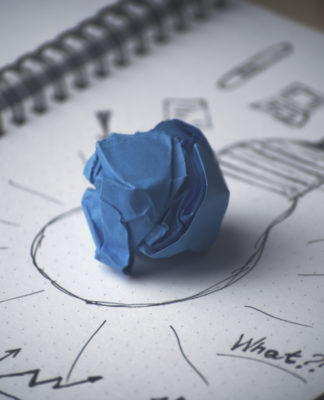You may have blushed at times when you were embarrassed, humiliated, discouraged, or mortified. Although blushing is an innately patterned emotional response, it can be conceived most simply as a reaction to heightened self-consciousness. 1 Blushing occurs in situations that you perceive as involving a social transgression; however, it can happen in an exciting situation as well, such as in the self-consciousness of being physically attracted to another person. Such exposures & experiences cause you to blush because they activate feelings of shame 2 —you think of yourself as “caught” in the eyes of others, and you may feel as though you are inadequate, lacking, or vulnerable in terms of any number of important attributes.
To make matters worse, shame feelings create a heightened awareness of your own face, and blushing then leads to even greater face-consciousness and self-consciousness. 3 When you blush, you will have a desire to hide your face from being seen. However, rather than decreasing what you are broadcasting via your facial expression, you increase it by blushing. Specifically, the effect of blushing is an increase in facial communication and that, consequently, increases shame. 4 Although such self-consciousness may lead you to avoid eye contact, some researchers maintain that in these situations individuals actually look for emotional feedback from their audience. 5 Thus, although you may shift your gaze and glance down, you may also seek cues about the emotional reactions of others by glancing at the expressions conveyed through their eyes. 6
The face expresses all emotions. However, the face is experienced most prominently in self conscious shame responses. 7 Blushing occurs most commonly in the face, given it is the primary source of communication and emotion. “The face and the eyes are where the self lives,” notes affect theorist, Silvan Tomkins, “where it exposes itself and where it receives similar exposures from others.” 8 So the positive side of your blush is that you are communicating something important about what you feel. Blushing is an honest response, whether it is because you feel “caught” being sexually excited about another person, or mortified about being observed in social wrongdoing or in an accident, such as spilling something all over yourself at an important event.
Physiologically, blushing occurs when an emotional trigger causes your glands to release the hormone adrenaline in your body. Adrenalines effect on your nervous system causes the capillaries that carry blood to your skin to widen. Since blood is then brought closer to the surface of the skin, it causes you to blush. Blushing does not only occur on the face—you may blush in any part of the body to which attention is directed. 9 What’s interesting about blushing is that receptors in the veins of human necks and cheeks dilate in response to social threat. 10 What’s threatened in the case of such a shame response is not only your self-acceptance, but your social acceptance as well.
Blushing can be to your advantage because it is a distinct signal of sincere regret; it signals to others that you acknowledge your shame, mishap, or social wrongdoing, and in doing so, it promotes trust and positive judgments by observers. 11 In other words, if you show embarrassment by blushing at your transgressions then you are more prone to be liked, forgiven, and trusted than those who do not. As a result, your blush may help you save face. 12
References
1. Tomkins, S.S. (1962/2008). Affect Imagery Consciousness. New York: Springer.
2. Nathanson, D. Nathanson, D.L. (1992), Shame and Pride: Affect, Sex, and the Birth of the Self. New York: Norton.
3. Tomkins, S.S., cited above.
4. Tomkins, S.S., cited above.
5. Darby and Harris
6. Darby and Harris
7. Tomkins, S.S., cited above.
8. Tomkins, S.S., cited above.
9. Tomkins, S.S., cited above.
10. Drummond, P., & Lance, J. (1997). Facial flushing and sweating mediated by the sympathetic nervous system. Brain, 110, 793–803.
11. Dijk, C., Koenig, B., Ketelaar, T., & de Jong, P. (2011). Saved by the blush: Being trusted despite defecting. Emotion, 11(2), 313–319.
12. Keltner, D., & Anderson, C. (2000). Saving face for Darwin: The functions and uses of embarrassment. Current directions in psychological science, 9(6), 187–192.
(For information about my books, please see my website: www.marylamia.com)


 As clinical psychologist and psychoanalyst I work with adults, adolescents, and preteens in my Kentfield, California private practice. I am also a professor at the Wright Institute in Berkeley, California. Teaching the public about the psychology of human behavior has been something I've done for over 35 years. For nearly a decade I hosted a weekly call-in talk show, KidTalk with Dr. Mary, on Radio Disney stations, and have provided opinions in many media interviews and discussions.
My books include:
As clinical psychologist and psychoanalyst I work with adults, adolescents, and preteens in my Kentfield, California private practice. I am also a professor at the Wright Institute in Berkeley, California. Teaching the public about the psychology of human behavior has been something I've done for over 35 years. For nearly a decade I hosted a weekly call-in talk show, KidTalk with Dr. Mary, on Radio Disney stations, and have provided opinions in many media interviews and discussions.
My books include: 




















